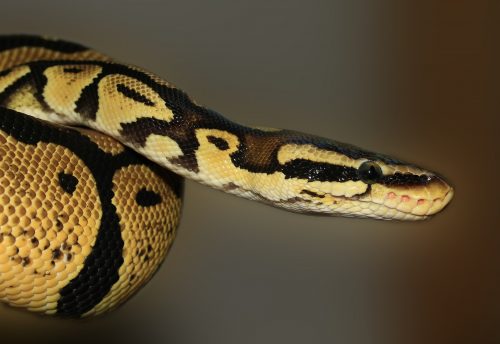Researchers have developed a self-repairing water-repellent surface, inspired by the snake's skin shedding mechanism.

By: Yossi Cohen
Water-repellent (hydrophobic) surfaces have many important uses, such as in car windshields, and in bottles containing viscous liquids such as ketchup, mayonnaise, syrups, cleaning agents, and more. To date, super-hydrophobic materials with nanometer structures have been developed, inspired by lotus leaves or "water-runners" bedbugs. The main disadvantage of the materials developed to date is their sensitivity to mechanical damage such as scratches from sharp objects, which damage the sequence of the hydrophobic layer, and therefore cause the loss of their ability to repel water.
A group of scientists from the University of Freiburg in Germany, led by J. Ruhe, solved this problem by developing a super hydrophobic structure with self-healing ability, inspired by the snake's skin shedding mechanism. The snake sheds its skin as it elongates, the top layer is removed and a lower epidermis layer is exposed. The inspiration led to the design of a hydrophobic surface capable of self-repairing scratches by adding the scratched and damaged outer layer and exposing the bottom layer, a super hydrophobic silicone layer.
In fact, the proposed design of Ruhe's "repair bar" surface consists of three layers, one above the other. The top layer is a hydrophobic film based on the polymer Perfluorodecyl Acrylate (PFA), also known as "nanograss". The water repellency of the "nanograss" results from a nanometer structure of cone-shaped particles, which protrude above the surface. The middle layer consists of a water-soluble polymer Polyvinylpyrrolidone (PVP), which is used for medical applications, and the bottom layer is a super hydrophobic silicone film.
The idea is that when the top layer is scratched, water penetrates through the scratch and dissolves the middle polymer layer. As a result, the top defective layer is released from the structure, and the bottom super hydrophobic silicone layer is exposed.
The scientists report that the new "repairable" structure is still in the development stages in the laboratory, where the main goal is to strengthen the resistance of the upper layer to scratches that damage the lower layers.
If they succeed in this mission, their patent of a multi-layer structure will advance the development of "repairable" water-repellent products.
